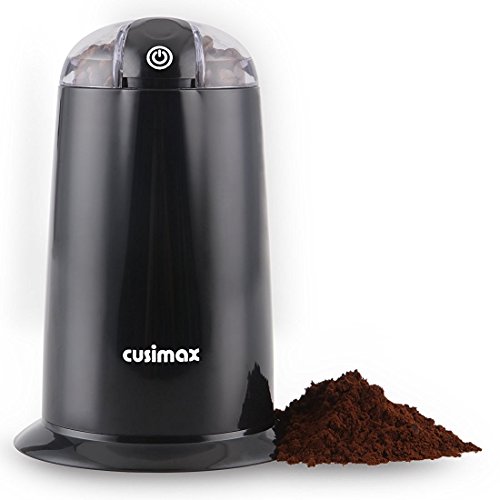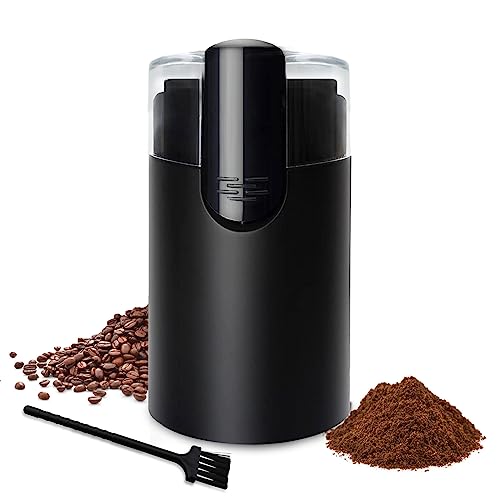7 Helpful Tricks To Making The Most Of Your Professional Coffee Grinde…
페이지 정보

본문
 Choosing a Professional Coffee Grinder
Choosing a Professional Coffee GrinderWhile many brewers focus on the espresso machine and the quality of the beans, a professional coffee grinder is equally important. This is especially true when making espresso, which requires a precise and consistent grind size.
The DF64 features flat burrs and a uniformly-sized grind size, resulting in a clean taste. It has the added advantage of being able upgrade to new burrs should you require it.
How to choose a grinder
The coffee grinder is a vital piece of equipment for any espresso-based cafe. Choosing the right professional coffee grinder is vital to ensure you are making consistent, high-quality cups each time. When looking for an industrial-size coffee grinder, you must think about a number of aspects to determine the right model for your business.
Start by evaluating the grinder's capabilities. You should ensure that it is able to handle how many beans you plan to grind each day. Also, check the grinder's RPM and wattage to determine its ability to efficiently grind. Higher RPMs and wattages enable the grinder to grind faster, while lower RPMs and wattages will result in slower processing.
The type of burrs you choose is also crucial. A majority of industrial-sized grinders come with conical steel and flat burrs, with each having distinct advantages. Conical burrs for instance may result in some fines that are not as fine, which is beneficial to certain styles of brewing. On the other hand flat burrs are typically preferred by baristas with experience due to their uniformity.
Once you've chosen the type of burrs you want to use, it's important to think about the overall design and durability of the grinder. The most durable industrial-sized grinders will have a sturdy and solid design, and an extremely powerful motor that can handle high levels of use.
Think about the size of the hopper. This is the container in which beans are kept before they're ground. Commercial grinders typically have large hoppers that can hold a few pounds of beans at one time.
Size
The base or body of the grinder typically houses an impressive motor. These are typically designed for commercial use, and have a higher power capacity than home or personal coffee grinders. This is crucial because it allows the grinder to grind a large bag of beans throughout the day without overheating. Overheating coffee grounds can cause them to burn and ruin their flavor. A larger motor also provides more torque at lower speeds, which makes it easier to grind your coffee without losing its flavor or creating bitter grounds.
 Consistency in grind size is important for a good quality cup of coffee. Different methods of brewing require different grind size to maximize extraction and enhance the coffee's flavors. For instance, coarser grinding is the best for French press, cold brew and Aeropress, while smaller grinding is ideal for espresso or Aeropress. Regularly cleaning your coffee grinder will help reduce the accumulation of residue that can adversely affect the consistency of your grind.
Consistency in grind size is important for a good quality cup of coffee. Different methods of brewing require different grind size to maximize extraction and enhance the coffee's flavors. For instance, coarser grinding is the best for French press, cold brew and Aeropress, while smaller grinding is ideal for espresso or Aeropress. Regularly cleaning your coffee grinder will help reduce the accumulation of residue that can adversely affect the consistency of your grind.The majority of commercial coffee grinders include an area for dosing (also known as a doser). These are designed to hold the handle of the group as you load it into your espresso machine. The doser lever rotates the grinder's apron to drop a precise amount of ground coffee into the portafilter. Some grinders can also be used for grinding a finer, more regular grind for filter coffee bean grinder machine or Turkish coffee.
Some grinders have a flat burr that is ideal for espresso. The flat burrs feature two rings that are flat against one other, and then rotate to grind the beans. This allows for a very narrow space for water to flow through which is perfect for espresso machines.
Weight
Commercial coffee grinders are designed to be used over long periods of time, therefore they need to be able to perform reliably and consistently. This means that they should be able to handle the workload of a busy café without overheating or failing. They also need to be able of producing steady results, whether they are grinding for espresso or drip coffee. This is why it is crucial to select an espresso grinder made with high-quality components and is powerful enough to be able to operate all day.
A commercial coffee bean grinder machine grinder is likely to include a grinding mechanism which comprises two burrs (steel with sharp grooves that resemble teeth) that are able to rotate in tandem and break up the beans into small coffee grinder particles. The grind setting determines the size of the pieces. Pour-over cold brewing, brews and espresso are made best with a fine grind.
The grinding chamber is actually located on the top of the grinder. The grinder may have a dosing compartment on top that can be set to weigh the desired amount of ground coffee that is to be released. The grinder could also include a hopper to hold the coffee beans until ready to grind.
The capacity of the hopper may vary widely and affect how many beans you can grind at once. If you are looking to grind enough coffee to fill multiple portafilters, or to avoid having to refill your hopper often the large capacity grinder can be beneficial.
Durability
A grinder needs to be able to endure the rigors of heavy use while remaining in good shape. Look for one with high-quality materials and durable construction. A high-end coffee niche grinder must be easy to clean, especially when it is frequently used. You can use a vacuum cleaner or an air compressor to clean coffee residues and dirt from the removable components, like the grind chamber or hopper. If the burrs have been disassembled and need to be cleaned, make use of a brush or burr cleaner to thoroughly clean them.
The type of grinder you choose will also impact its durability. blade grinder grinders are more affordable but they produce lots of heat when grinding beans. This can cause damage to beans and alter the flavor of beans prior to making them ready for brewing. Burr grinders, on the other side, are more durable and offer better consistency in grinding results. They are typically comprised of ceramic or steel burrs and are divided into two categories: flat and conical burrs.
In addition to the model of grinder, the way the grinder is used will have an effect on its durability. If the collar can be moved and not locked into place it will wear out and alter the settings. There is an unlock button on the grinder that locks the collar to stop accidental changes.
A commercial grinder is designed to assist your staff serve fresh, delicious cups of coffee to your customers. You can preserve the aroma and taste of the beans by grinding them just before brewing. However, coffee that is pre-ground has lost some of its flavor and can be more bitter than it should. You can prevent this by using a coffee mill to limit the amount of time that the beans are exposed.
Noise
A high-quality commercial coffee grinder can be loud- it's grinding hard beans, after all. However, some grinders are louder than others, which can cause disruption to your workflow and detract from the coffee experience for patrons in your restaurant or cafe. To minimize noise, look for a quiet grinder that operates quietly while grinding beans.
The level of noise a grinder makes is largely dependent on how many beans are being ground at the same time. A grinder that has a larger hopper can grind more beans at one time, which causes it to make more noise. The type of burrs used and the product material also play a part in how loud a grinder is. Conical burrs cut down on noise and heat better, while flat burrs generate more heat.
A high-quality grinder is an essential element of making excellent coffee. It ensures that the beans are ground consistently, so that all of the essential flavors are extracted when hot water is pour over them. It is important to keep in mind that even a professional-grade grinder can become worn over time, which may result in a less precise grinding.
Keeping your grinder in good condition requires regular cleaning, checking the components for wear and tear, and understanding the settings. This is especially true when you use the machine to make espresso. Examining the machine for signs of heat production and excessive grind retention is crucial because they could negatively affect the flavor and aroma. Also, it is crucial to clean the grinder regularly to get rid of any dirt or coffee residue.
- 이전글Everything You Need To Be Aware Of Indoor Wood Burner Stove 24.12.10
- 다음글10 No-Fuss Strategies To Figuring Out Your Private ADHD Assessment 24.12.10
댓글목록
등록된 댓글이 없습니다.


